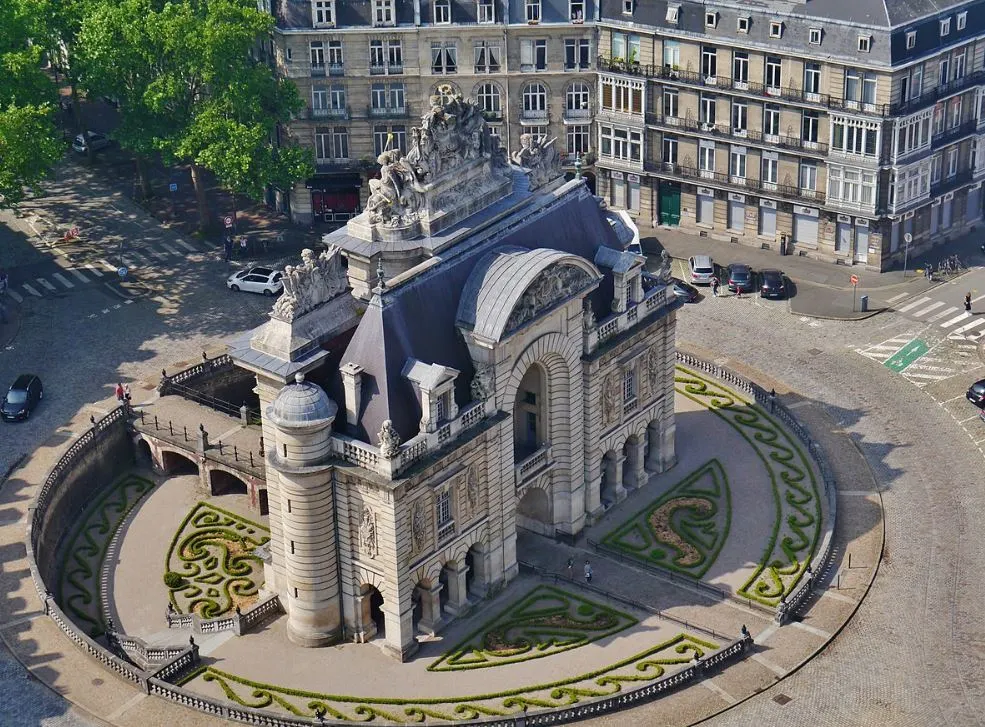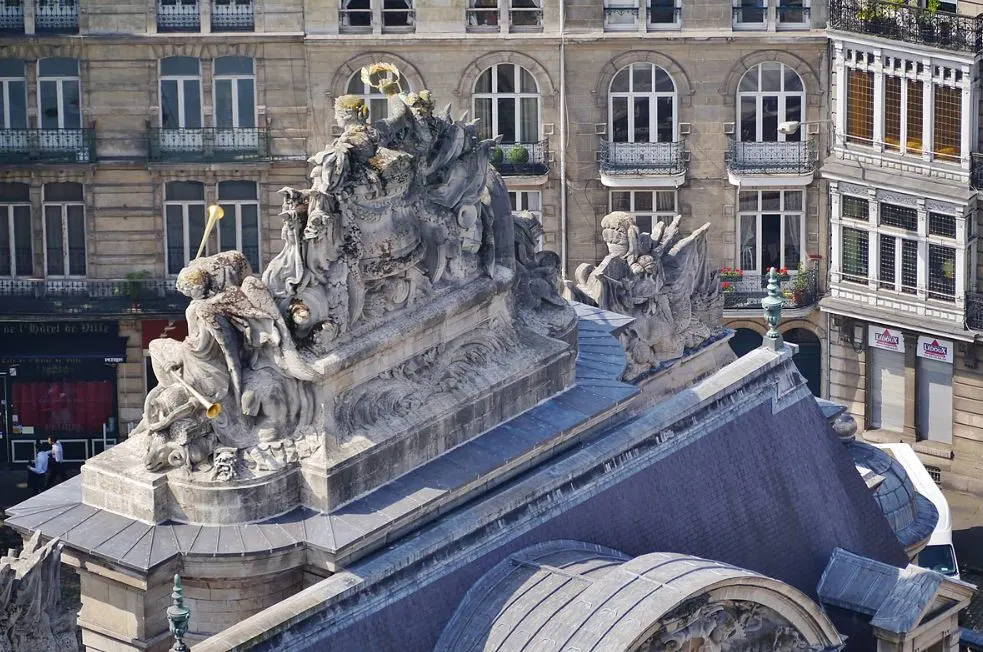The huge Citadel is not the only example of military architecture in Lille, a city in the northern part of France that was part of the Spanish Netherlands until the 17th century.
Porte de Paris, or “Gate of Paris,” is a magnificent arch that stands just east of Lille’s historical center known as “Vieux-Lille.”
Built to celebrate the conquest of the then Flemish city, the French King did so in his typical style of grandeur and splendor.
Let’s check out what this arch in France is all about, shall we?!
Why was the Porte de Paris in Lille built?
The Porte de Paris in Lille was built for several reasons, primarily as a ceremonial entrance to the city and as a tribute to the reigning monarch of the time, King Louis XIV of France (1643-1715).
Here’s a more detailed explanation of why the Porte de Paris was constructed:
Ceremonial Entrance
The Porte de Paris was designed to serve as a grand and imposing entrance to the city of Lille. During the 17th century, when the gate was constructed (between 1685 and 1692), elaborate entrance gates were common architectural features in many cities.
These gates symbolized the importance of the city and often had both functional and symbolic roles. The Porte de Paris, with its triumphal arch design, was meant to welcome visitors to Lille in a grand and dignified manner, creating a lasting first impression of the city.

Tribute to King Louis XIV

One of the main motivations behind the construction of the Porte de Paris was to honor and pay homage to King Louis XIV, also known as the “Sun King.” Louis XIV was a powerful monarch who played a significant role in shaping France’s history and culture during his reign.
The gate’s construction was part of a trend during his rule to create grand monuments and architectural marvels as expressions of royal power and prestige. The Porte de Paris, dedicated to Louis XIV, was meant to showcase the city’s loyalty to the king and to celebrate his reign.
The citizens, at the time, probably didn’t have exactly the same sentiment after a 10-day siege…

Architectural Statement
The Porte de Paris was not only functional but also served as a representation of the architectural and artistic achievements of the time. Architect Simon Vollant (1622-1694), who was responsible for its design, aimed to create a structure that showcased the best of French military architecture.
The gate’s intricate sculptures, intricate carvings, and grand proportions reflected the architectural trends of the period, particularly the Baroque and Neoclassical styles.
Remarkable note: Simon Vollant also designed the impressive Citadelle de Lille, an incredible feat of military architecture.

The Porte de Paris is taller than you think
The nearby Hôtel de Ville, Lille’s City Hall building with its impressive belfry tower that stands 104 meters (341.2 feet) tall, makes the Porte de Paris actually appear to be shorter than it is.
Despite being flanked by a building that can be defined as a skyscraper, the arch still stands 29 meters (95.14 feet) tall, quite an imposing structure to behold.

The Arch is Decorated with Amazing Baroque Sculptures
Apart from the allegory of victory that tops the arch to celebrate Louis XIV’s victory in Lille, you can also discover several other amazing Baroque sculptures.

Mars and Hercules decorate one side of the arch, while the other side features medallions featuring the coat of arms of the city.
Yes, this arch breathes history, that’s for sure, and can be described as one of the most stunning landmarks in Lille.
